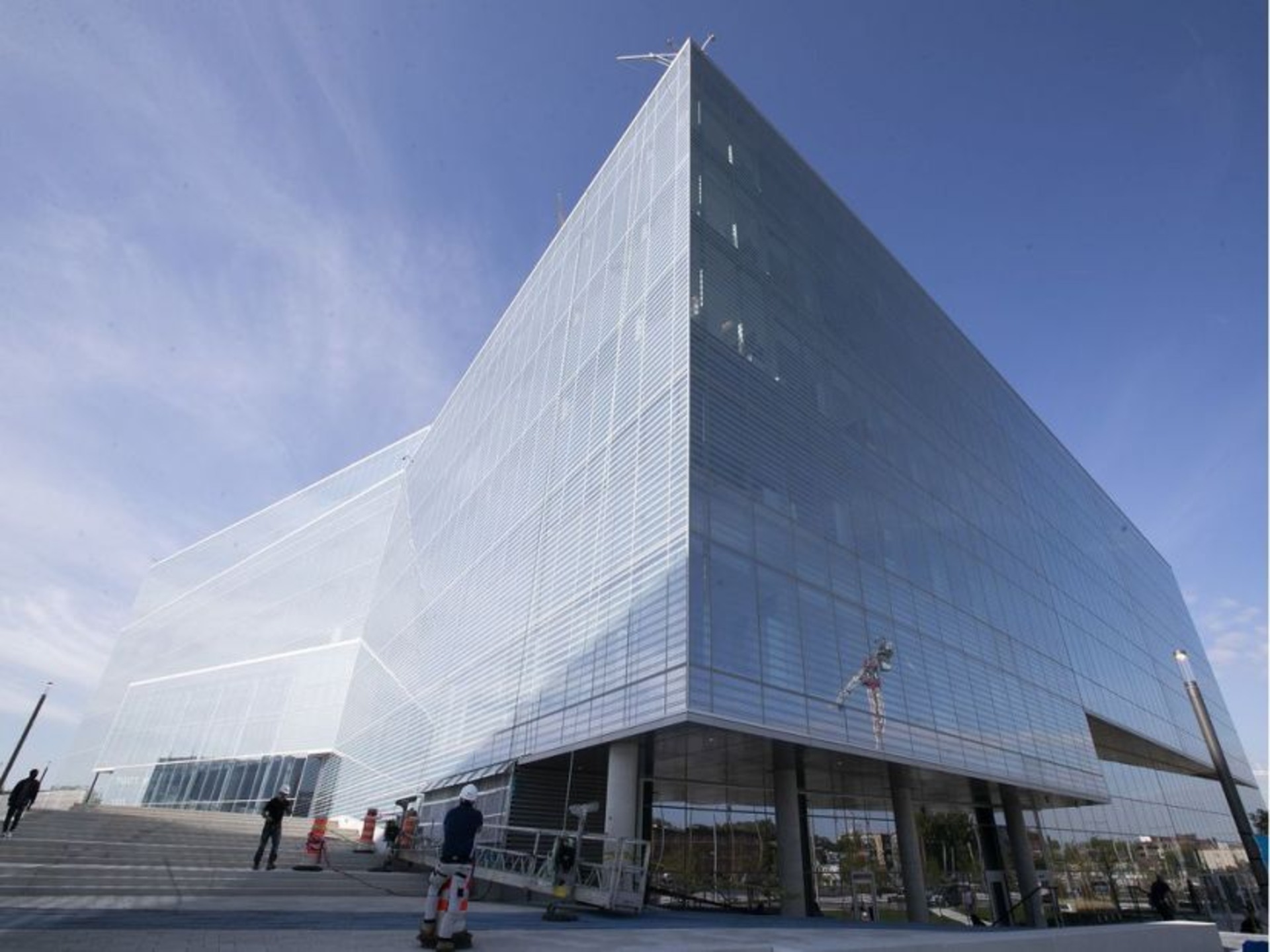U de M campus creates a new neighbourhood in old Outremont Train Yard!
20 Sep 2019
It’s not every day a new university campus is built, and on Friday, the Université de Montréal officially opens its new science campus — the result of 10 years of planning and three years of construction.
Situated in the old Outremont Train Yard, steps away from the l’Acadie métro station, and in the shadow of Mount Royal, the Outremont campus has two buildings that can accommodate 2,000 students and 200 teachers. One building is devoted to classrooms, amphitheatres and meeting spots, while the other is an eight-storey building with laboratories and collaborative spaces, including a large café, a food court and an atrium.
The construction also creates a new residential neighbourhood to house up to 3,000 residents — as the university sold some of its land to the city.
The Montreal Gazette interviewed the project’s lead urban planner, Pierre St-Cyr, about the challenges of creating a new campus in the heart of a dense urban environment.
Workers are seen near the new Université de Montréal campus on Thursday, Sept. 19, 2019. PIERRE OBENDRAUF / MONTREAL GAZETTE
MG: What was it like to be part of this project?
St-Cyr: It was very exciting because we started with a brown field. There was no life there, so the challenge was to bring life to this huge tract of land.
MG: The new campus is located in the middle of a densely populated area that is often clogged with traffic congestion. What were your motivations in creating a site that didn’t add to that congestion?
St-Cyr: The first step was to limit parking in the area. For 2,400 people who will go there, there are only 100 parking spots. When it’s completed, there will only be 400 parking spots (for 10,000 people on the campus). I admit it’s not much of a challenge for students, because most of them don’t have driver’s licences, but for researchers, employees and professors, we had to explain to them that this is the new way to do things.
MG: Was there pressure to extend the road network and make it easier for cars to access the site?
St-Cyr: No. If we had been in 1950 instead of now, there would have been a huge overpass from l’Acadie Blvd. linking to the campus just as monstrous as the (nearby) Rockland Rd. overpass, but that’s not the way the city is being developed now. Instead, the emphasis is on a walkway that links to the l’Acadie métro station. It’s wide; it’s a public space that will always be open and there will be a park there. There will also be a pedestrian level crossing at de l’Épée Ave. (at the eastern extremity of the site).
We organized the development around two métro stations (Acadie and Outremont), so we built the walkway, and we extended Wiseman Ave. and added wide sidewalks to make it inviting to walk to the Outremont station, and we’re aware that a REM station will be two métro stops away (at Édouard Montpetit station on the Blue Line), so that’s a bonus.
MG: While you didn’t extend l’Acadie, the plan calls for a new road link to be built to Parc Ave. Are you concerned cars will use it as a shortcut?
St-Cyr: The city wanted to redevelop the whole area between Durocher Ave. and Parc, which are buildings from another era. We agreed, because it gives us a link to Parc, and when it’s completed in a year and a half, it can connect to the bus network and to the city’s bike path network.
We’re discouraging car use with the geometry of the streets. The main street, called Thérèse-Lavoie-Roux St., has no parking on it. It has bike paths that are wider than the norm, they are unidirectional on each side of the street, and they are elevated from the street. The intersections are done in a manner that’s not car-friendly. For sure, motorists will look for a way to take a shortcut, but what we observe on the site is that the situation is so difficult that people will abandon their cars for public transit.
MG: The university has said that its mission in building the new campus was to integrate with the surrounding neighbourhood. How have you done that?
St-Cyr: The university decided to be a good corporate citizen, so it opened an optometrist and dental clinic on Beaumont Ave. where students will offer their services almost free of charge. It’s also a chance to do outreach with the Park Extension community, which has a lot of newly arrived immigrants. That’s why on the eastern side of the site, there are community gardens, and we hold events and invite people from the neighbourhood and local organizations; we have been doing it for a few years already. Just as an aside, but when we held a cabane à sucre in the spring, I saw kids eating taffy on the snow, and I’m sure it was the first time in their lives.
